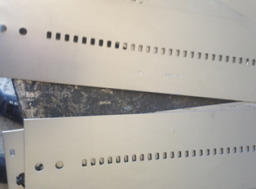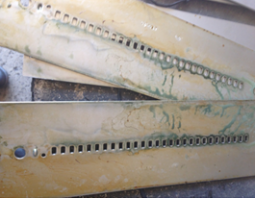Water hardness can dramatically alter the residues left behind by stamping lubricants on stamped parts. Most stamping lubricants can accommodate reasonable water hardness, but in excessively hard water—residues can become far more difficult to remove and sometimes can be rendered water insoluble.


Emulsifiable oil stamping fluids—if not exhibiting emulsion instability (crème &/or sediment formation) can manifest residues more akin to grease when allowed to dry. The oil soluble components mix with hard water ions and tend to form more water repellent calcium and magnesium soaps.
Oil-free, synthetic stamping fluids will have a tendency to form tacky or gummy residues where excessive hard water is an issue. These residues may be generally more water soluble than their oil-containing counterparts, but there may still be an impact of finishing processes.
Please also note that even with water that is “marginal” in hardness—can become more problematic where diluted fluid pools and dries down over time. While the diluent water will evaporate in parts’ storage—the hard water ions and the complexes they form with lubricant components do not. This “concentrating” of hard water compounds through evaporation can occur when parts are flooded with lubricant in process and excess fluid pools and collects in critical areas. Parts are designed for their ultimate function and are not typically engineered for drainage of excess fluid.
For these reasons, IRMCO advises customers to monitor their diluent water quality and take necessary steps to mitigate the impact of residues created by excessively hard water. While water filtration and purification systems like reverse osmosis systems are sometimes viewed as expensive additions to production—they help reduce or eliminate many maintenance, tooling, finishing and scrap/rework associated issues—ultimately saving money and greatly improving consistency of operation and efficiencies.
IRMCO has always championed the process of “lubricant optimization” – reducing the amount of fluid volume delivered to the parts being formed and therefore reducing the likelihood of fluid pooling and minimizing residues left behind.


